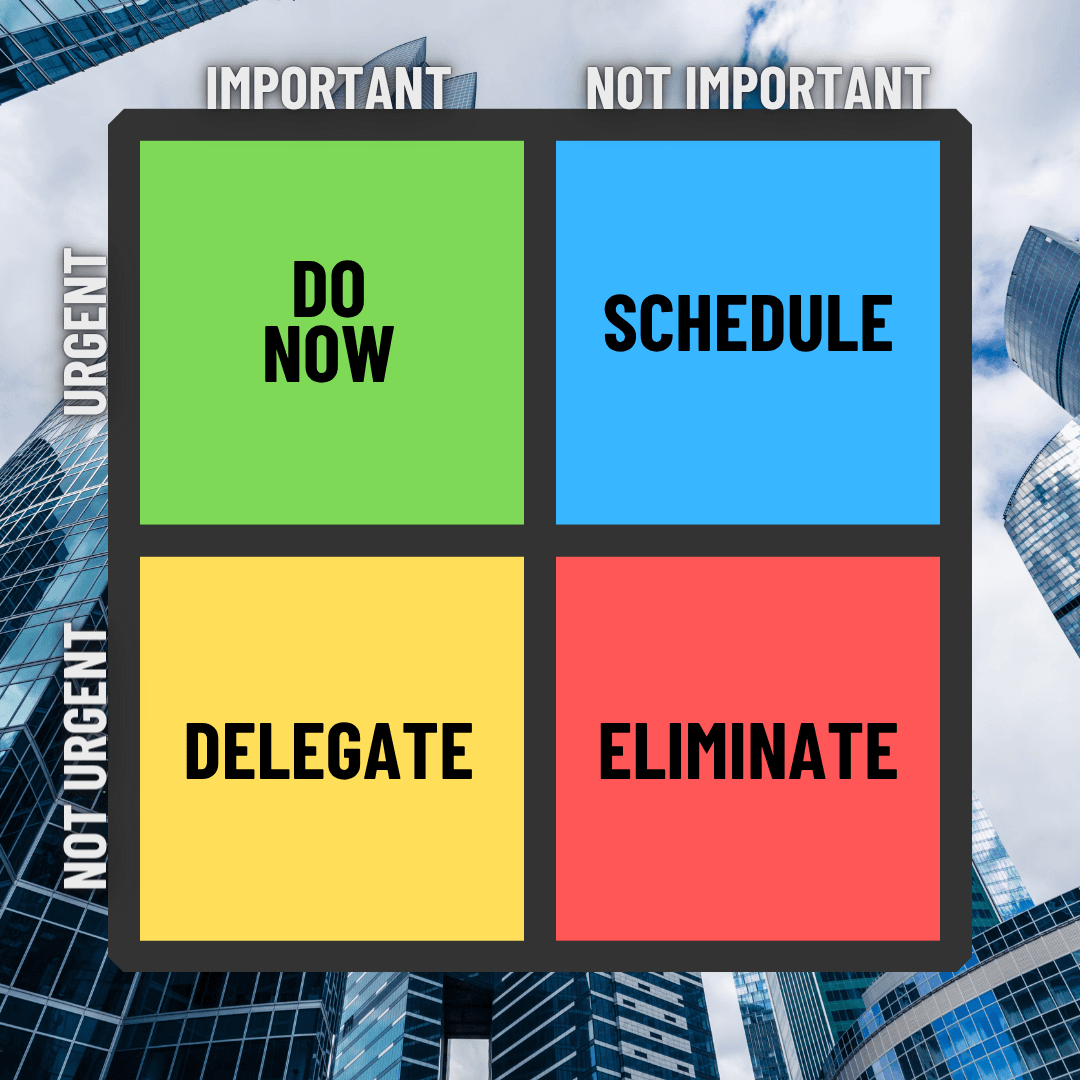Dwight Eisenhower, the 34th U.S. President, faced immense challenges, from wars to the dawn of the space race. One of his enduring insights was: “What is important is seldom urgent, and what is urgent is seldom important.” From this came the Eisenhower Matrix, a powerful prioritization tool popularized by Stephen Covey. In today’s fast-paced Small and Medium-Sized Business (SMB) environment, working smarter with this matrix is more critical than ever.
The Eisenhower Matrix: A Framework for Clarity
I’ve discussed the Eisenhower Matrix before in the context of breaking reactive “firefighting” cycles. Let’s delve deeper into how it can guide your day-to-day (and strategic) planning. The matrix plots tasks against two factors: Importance and Urgency, creating four quadrants:
- Necessity (Urgent and Important – DO FIRST):
- These are true crises (critical system failures), hard-deadline-driven activities (key project deliverables), pressing problems (major client issues), or last-minute preparations for unavoidable, high-stakes events.
- These demand immediate attention. However, critically assess if a task truly belongs here:
- Is this system failure genuinely business-critical, or is there a temporary workaround?
- Is this deadline firm, or is there flexibility?
- Is the client request truly critical, or can alternatives be offered?
- Is this an organizational emergency or merely an “executive whim”?
- Deception (Urgent and Not Important – DELEGATE/MINIMIZE):
- These tasks clamor for attention with false urgency but aren’t truly important to your core outcomes or strategic priorities. They often involve meeting other people’s immediate (but not strategic for you) priorities, or frequent interruptions (non-critical emails, calls) that don’t align with your key goals.
- These often fail the “important” test during your “Necessity” assessment. Learn to identify and delegate or politely defer them.
- Waste (Not Urgent and Not Important – ELIMINATE):
- We all fall into “waste” activities, often when procrastinating on more challenging “Leadership” tasks. This includes escapist activities (that third coffee run), busywork (endlessly tweaking a presentation no one will notice), or irrelevant communications.
- Be vigilant. When you find yourself in “Waste,” stop immediately. These activities suck productivity and energy with no return.
- Leadership/Strategy (Important and Not Urgent – SCHEDULE/FOCUS):
- This is where “working smarter” truly happens. Tasks in this quadrant are crucial for long-term success and proactively reduce future “Necessity” crises.
- For SMB Leaders & Their IT: This includes:
- Strategic planning (business and IT roadmapping).
- Proactive problem-solving and process improvement.
- Investing in foundational capabilities (e.g., modernizing IT infrastructure, proactive cybersecurity).
- Team development, empowerment, and delegation.
- Building key relationships (clients, partners, internal stakeholders).
- True recreation and renewal (to maintain leadership effectiveness).
- As a fractional CIO, a primary goal is to help SMBs carve out and protect resources for these “Important/Not Urgent” technology initiatives that build future resilience and competitive advantage.

Working Smarter: Applying the Matrix Systematically
Categorize all your tasks (and your SMB’s initiatives) into these quadrants. Then, prioritize action:
- Necessity (Do it now, but be ruthless in your assessment of what truly belongs here).
- Leadership/Strategy (Schedule dedicated time for these every day/week; they are your future).
- Deception (Delegate if possible, minimize, or say no).
- Waste (Eliminate aggressively).
Even if your “Necessity” list seems overwhelming, forcefully schedule time for “Leadership/Strategy” tasks daily. Even 30 focused minutes on strategic work can break the reactive cycle over time.
What’s Next
By leveraging the Eisenhower Matrix to understand and prioritize your tasks and your SMB’s strategic initiatives, you’ll find your “Necessity” list shrinking, your stress reducing, and your capacity for true leadership and strategic impact growing. The value you deliver is directly related to doing the right things at the right time. This simple matrix is a powerful tool to help you, and your business, “Succeed Sooner.”
Is your SMB leadership team constantly battling the “Urgent,” leaving little room for the truly “Important” strategic work, especially concerning your technology future? If you’re looking for a partner to help you apply strategic prioritization to your IT initiatives and build a more proactive, value-driven technology roadmap, let’s connect with Succeed Sooner Consulting.


Leave a Reply